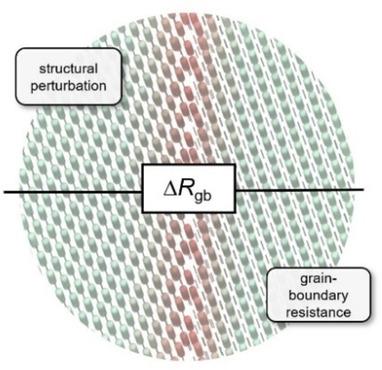当前位置:
X-MOL 学术
›
ChemElectroChem
›
论文详情
Our official English website, www.x-mol.net, welcomes your
feedback! (Note: you will need to create a separate account there.)
The Intrinsic Structural Resistance of a Grain Boundary to Transverse Ionic Conduction
ChemElectroChem ( IF 3.5 ) Pub Date : 2020-08-05 , DOI: 10.1002/celc.202000773 Annalena R. Genreith‐Schriever 1 , Jana P. Parras 1 , Henrik J. Heelweg 1 , Roger A. De Souza 1
ChemElectroChem ( IF 3.5 ) Pub Date : 2020-08-05 , DOI: 10.1002/celc.202000773 Annalena R. Genreith‐Schriever 1 , Jana P. Parras 1 , Henrik J. Heelweg 1 , Roger A. De Souza 1
Affiliation

|
Ion transport across grain boundaries in diverse polycrystalline ionic conductors is often found to be hindered. Such behaviour is commonly attributed to the presence of a highly resistive second phase or to the presence of space‐charge zones, in which mobile charge carriers are strongly depleted. One other possible cause – the severe perturbation of the crystal structure within the grain‐boundary core – is widely ignored. Employing molecular dynamics (MD) simulations of the model Σ5(310)[001] grain boundary in fluorite‐structured CeO2, we demonstrate an approach to extract the intrinsic structural resistance of a grain boundary (to ionic transport across it), and we determine this excess resistance as a function of temperature. Compared with space‐charge resistances predicted for a dilute solution of charge carriers the structural resistance of this interface is orders of magnitude smaller at temperatures below T≈1000 K but at T>1200 K it is no longer negligible.
中文翻译:

晶界对离子传导的固有结构抗性
经常发现跨多种多晶离子导体中跨晶界的离子传输受到阻碍。这种行为通常归因于高电阻第二相的存在或空间电荷区的存在,其中移动电荷载流子被严重耗尽。另一个可能的原因-晶界核内晶体结构的严重扰动-被广泛忽略。在萤石结构的CeO 2中使用Σ5(310)[001]模型晶界的分子动力学(MD)模拟,我们演示了一种提取晶界的固有结构电阻的方法(穿过该晶界的离子迁移),并且我们确定了该过量电阻随温度的变化。与预测的电荷载流子的稀溶液这个接口的结构阻力是数量级的在温度低于较小空间电荷电阻相比Ť ≈1000ķ但在Ť > 1200ķ它不再是可忽略的。
更新日期:2020-08-05
中文翻译:

晶界对离子传导的固有结构抗性
经常发现跨多种多晶离子导体中跨晶界的离子传输受到阻碍。这种行为通常归因于高电阻第二相的存在或空间电荷区的存在,其中移动电荷载流子被严重耗尽。另一个可能的原因-晶界核内晶体结构的严重扰动-被广泛忽略。在萤石结构的CeO 2中使用Σ5(310)[001]模型晶界的分子动力学(MD)模拟,我们演示了一种提取晶界的固有结构电阻的方法(穿过该晶界的离子迁移),并且我们确定了该过量电阻随温度的变化。与预测的电荷载流子的稀溶液这个接口的结构阻力是数量级的在温度低于较小空间电荷电阻相比Ť ≈1000ķ但在Ť > 1200ķ它不再是可忽略的。









































 京公网安备 11010802027423号
京公网安备 11010802027423号